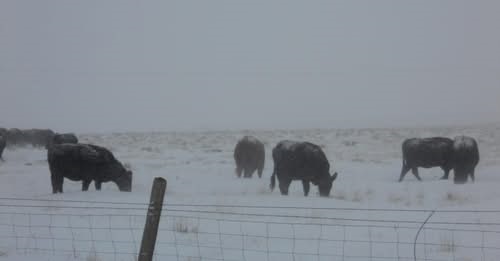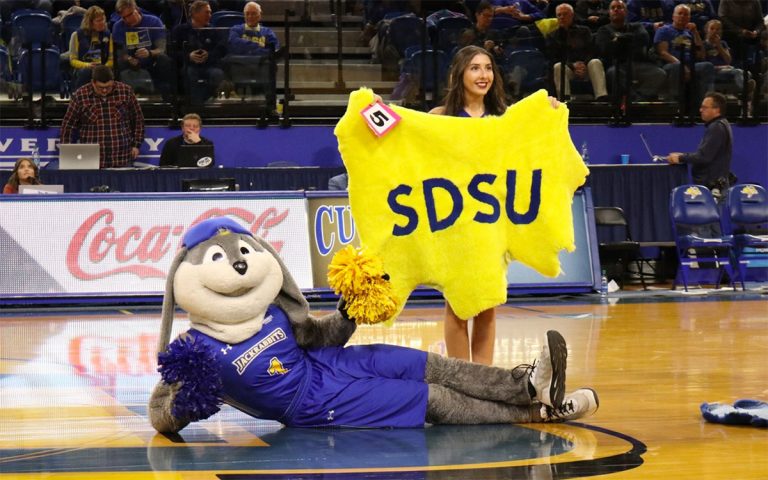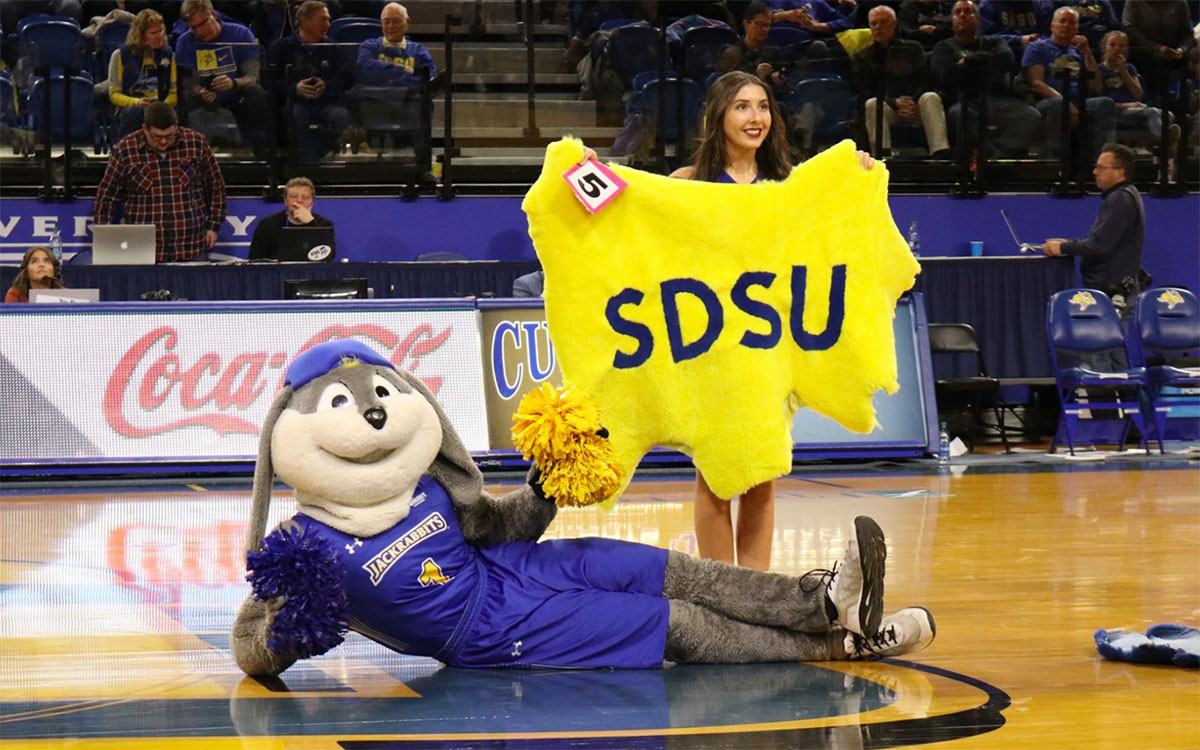STURGIS, S.D. – Ranchers with cattle on winter pastures have a few management strategies to help them cope with the large snowstorm that impacted much of Western South Dakota along with the major ice storm across the Northeastern part of the state.
Wind Protection
Protection from the wind for cattle grazing dormant winter pastures is critically important. As stated by Warren Rusche SDSU Extension Beef Feedlot Management Associate, “Reducing wind speed from 20 mph to 5 mph or less will reduce maintenance energy requirement by as much as 30 percent for that cow.” Most winter pastures have some sort of natural wind protection such as draws with thick trees or brush. Shelterbelts may also provide natural windbreaks on winter pastures. If a winter pasture lacks protection however, temporary windbreaks are an alternative.
Feeding Considerations
Snowstorms and cold snaps also force producers to adjust their feeding strategies. Sudden changes to a cow’s diet can cause digestive upset and problems. Any adjustments made to a cow‘s diet during and after a winter storm needs to be done gradually so cattle have time to adjust. Cattle grazing dormant winter pastures most likely will need their diet supplemented to ensure energy intake is adequate.
Protein is the first limiting nutrient for cattle on winter range. Energy is available in the fiber of lower quality forage or hay but cannot be utilized without extra protein to stimulate the microbes in a cow’s rumen to ferment and digest that fiber. The extra protein that feeds the microbes in the cow’s rumen causes the microbe population to grow which increases the capacity for her rumen to ferment the fiber in low-quality hay or dormant pasture. This in turn increases the amount and rate of digestion of low-quality forages. Consequently the cow is then getting more energy and more nutrients from each pound of low-quality forage consumed and is able to increase the amount eaten (Olson, K.C.).
Supplements
A rancher can get into trouble when the cow’s diet is changed abruptly with a grain-based energy supplement such as corn. High-starch energy supplements such as corn are low in protein and causes a drop in rumen pH, which results in changes in the microbe population. The fiber-digesting microbes decrease in population which leads to reduced forage digestibility and intake. As a result, even though additional energy is available from corn, there may be no net increase in total energy available to the cow because she consumes and digests less forage (Olson, K.C.).
Providing cattle grazing winter range with plenty of hay (maybe of lower quality) and additional protein supplement is an effective strategy during a winter storm. After the storm, additional supplementation may be needed to maintain body condition. A fiber based protein supplement should be considered rather than a grain starch-based supplement. Examples of protein supplements are: DDGS, WDGS, alfalfa hay, or 20% to 30% range cake. Granted, costs per ton and availability must be taken into consideration. Cattle also need access to water that is not frozen. Decreased water intake will lead to decreased hay and forage intake even if the hay and forage is readily available.
Grazing
Lastly, for cattle grazing dormant winter pastures the “take half leave half” strategy still holds true to protect the range resource. Sufficient cover must be left to capture snow and protect the soil surface from exposure.












